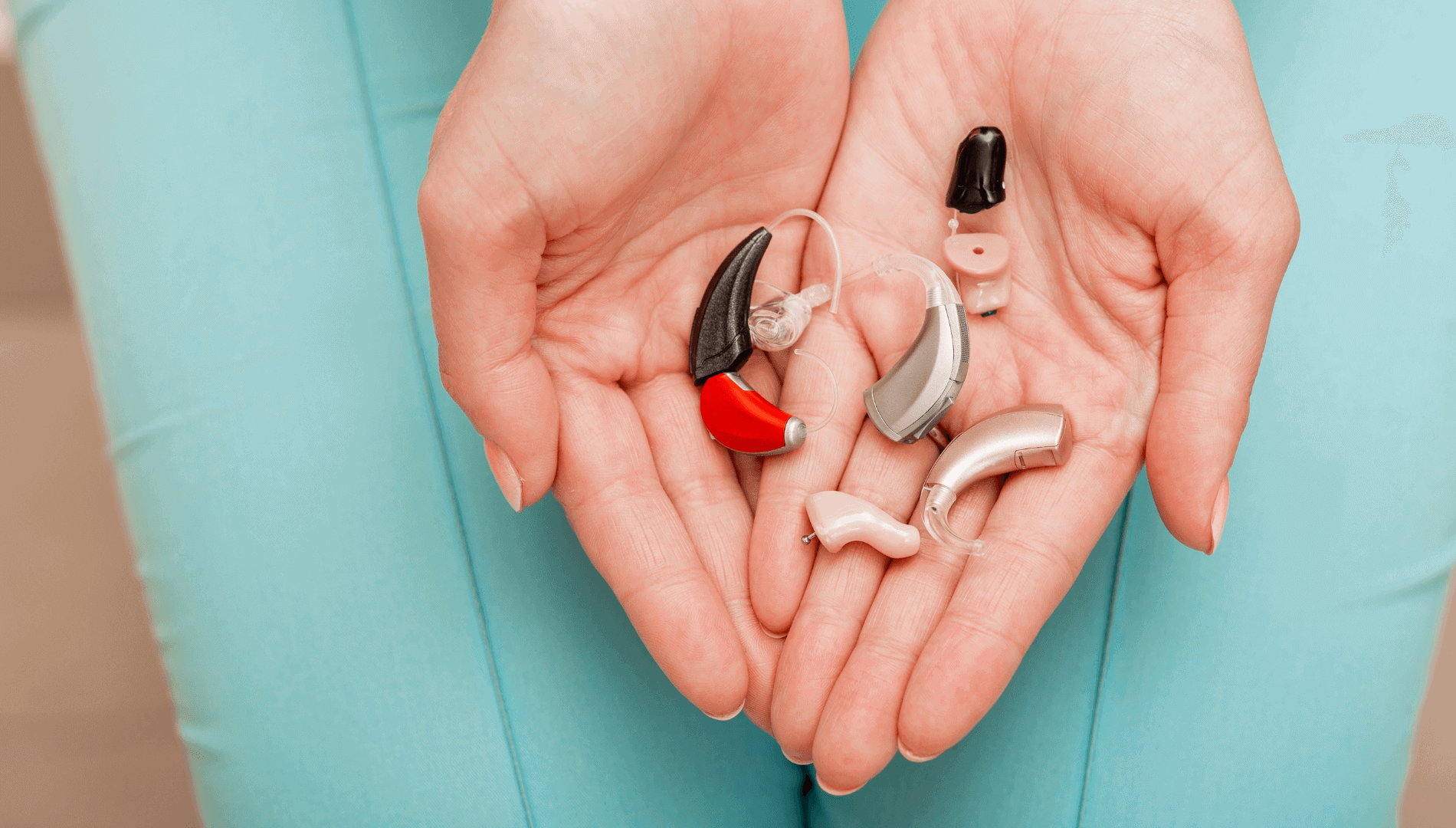
When hearing loss begins to affect daily life, hearing aids can restore a sense of connection and clarity. While the decision to start using hearing aids is empowering, choosing the right style can feel overwhelming. Every type has unique features, benefits, and drawbacks, and understanding these distinctions is key to making an informed and confident choice.
Below, we’ll explore popular hearing aid styles, highlighting what makes each one unique and providing practical insights to help you find the best fit for your lifestyle and hearing needs. Remember, this is a journey; one that can positively transform how you experience the world.
Behind-the-Ear Hearing Aids
Behind-the-ear (BTE) hearing aids are reliable and versatile, offering strong sound output that supports moderate to severe hearing loss. Though they’re larger and less discreet than other styles, this size allows for longer battery life and advanced features like wireless connectivity and noise reduction. If you value functionality, durability, and enhanced hearing, BTE aids can be a great solution.
In-the-Ear Hearing Aids
In-the-ear (ITE) hearing aids provide a comfortable balance between visibility and functionality. Custom-molded to fit the outer ear, they are suitable for mild to moderate hearing loss and easier to handle than smaller designs. While more noticeable than compact styles like completely-in-the-canal devices, ITE aids offer practicality for users seeking an accessible solution.
However, they are not ideal for severe hearing loss due to limited power output. Their lifespan can be affected by exposure to moisture and earwax, making regular maintenance critical to keep them functioning effectively over time.
Completely-in-the-Canal Hearing Aids
Completely-in-the-canal (CIC) hearing aids are a near-invisible option for mild to moderate hearing loss, sitting snugly in the ear canal. Their small size boosts confidence during daily interactions but limits battery life and advanced features like wireless connectivity.
Removal can be tricky for some users due to their deep placement, and regular maintenance is important to prevent dirt or moisture from affecting performance. Despite these challenges, CIC aids remain a popular choice for those seeking discreet hearing solutions that integrate seamlessly into their routines and interactions.
Receiver-in-the-Canal Hearing Aids
Receiver-in-the-canal (RIC) hearing aids offer a blend of discreet design and reliable sound quality. They feature a small receiver in the ear canal and a control component that rests subtly behind the ear. This setup ensures clear sound delivery without drawing much attention. However, slightly visible tubing may deter those seeking complete invisibility.
Routine maintenance is important to protect exposed components from environmental damage. For moderate hearing loss, RIC hearing aids balance comfort, sound clarity, and subtlety, making them an appealing choice for many users seeking versatility and performance.
Invisible-in-the-Canal Hearing Aids
Invisible-in-the-canal (IIC) hearing aids redefine discretion with their tiny size, fitting deeply within the ear canal. Because they are entirely hidden from view, they are often a preferred choice for those seeking an unnoticeable solution to mild hearing loss. Their small size also minimizes handling and adjustments during use, offering convenience for everyday wear.
The trade-off for their invisibility lies in their limited functionality; advanced features such as directional microphones or Bluetooth connectivity are often unavailable. Furthermore, individuals with more significant hearing loss typically need stronger aids that extend beyond what IIC devices can provide. Despite these challenges, the benefits of a sleek, unobtrusive design continue to attract many users.
Open-Fit Hearing Aids
Open-fit hearing aids are tailored for individuals who wish to experience a natural sound while addressing specific types of hearing loss. These devices sit behind the ear but use a thin tube to direct sound into the ear canal, leaving the canal partially open. This allows natural sounds to blend seamlessly with amplified sounds, which can enhance listening comfort in crowded environments.
Despite their advantages, open-fit hearing aids may not work well for individuals with significant hearing loss, as their design is tailored for high-frequency amplification. The more exposed tubing can also make it prone to wear and tear over time. Still, their lightweight feel and open design remain appealing for those who value auditory comfort and want an alternative to fully enclosed models.
